June 27, 2023
Hello, rising investors of Gen-Z and millennials! If investing seems like a complex puzzle, you’re not alone. But what if the key to deciphering this puzzle lies in understanding the language of leadership qualities? Intriguing, right? When investing, you’re not simply backing a company’s products or services; you’re placing your trust in their leadership. Understanding leadership qualities can be your secret decoder ring in the world of investment. Equipped with this knowledge, you can confidently stride into the investment arena and make savvy, informed decisions.
Strategic Vision: The Elon Musk Model

When it comes to having a strategic vision, few leaders can compare to Elon Musk (Ted Interview with Elon Musk). The Tesla and SpaceX founder’s visions of sustainable energy and space exploration are more than just lofty dreams; they’re strategic roadmaps that guide all the companies’ actions. His vision has transformed Tesla from a niche player to a global powerhouse in the auto industry, making it a sought-after investment. For instance, when he proposed the concept of the electric semi-truck, many scoffed at the idea. But his strategic vision and conviction in his idea are set to revolutionize the trucking industry.
Adaptability: Satya Nadella’s Transformation

Satya Nadella’s tenure as Microsoft CEO is marked by remarkable adaptability in the face of challenges. Taking over in 2014, Nadella saw the need to reposition Microsoft in a rapidly evolving tech landscape. He shifted the company’s focus towards becoming a “productivity and platform” company, steering away from a ‘devices and services’ model.
One significant challenge was transforming Microsoft Office into a cloud-based subscription service, Office 365. This required altering the company’s profitable business model and convincing traditional users to accept a new way of using the software. Despite these challenges, Nadella’s bold move paid off, turning Office 365 into a success and increasing recurring revenue.
Further, Nadella led Microsoft to embrace open-source technologies, marking a major cultural shift from its previous stance. This step, while difficult due to internal resistance, demonstrated Microsoft’s willingness to adapt to modern tech trends, thus enhancing its appeal to investors. Nadella’s ability to navigate these challenges and lead Microsoft into a new era of adaptability underscores the importance of flexibility in leadership, making Microsoft a compelling prospect for investors.
Constant Communication: The Marc Benioff Way
Marc Benioff, CEO of Salesforce, is known for his constant communication. From detailed quarterly earnings calls to wide-ranging discussions with employees, Benioff keeps all stakeholders informed about Salesforce’s plans and progress. This level of openness fosters trust and confidence, making Salesforce an attractive investment opportunity. A vivid example of his communication style was during the pandemic, where he regularly held virtual all-hands meetings to keep employees updated about the company’s pandemic response.
Beyond frequent updates and broad discussions, Benioff developed the V2MOM (Vision, Values, Methods, Obstacles, Measures) model, a powerful tool that aligns everyone in Salesforce with the company’s goals. The V2MOM model empowers each employee to participate in strategic planning, ensuring a shared vision and purpose across the organization. This clear, inclusive communication strategy makes Salesforce a better company.
High Output Management Metrics: Andy Grove’s Success Story
Andy Grove, the former CEO of Intel, wrote the book on high output management. His relentless focus on key management metrics, from operational efficiency to employee productivity, helped Intel become a leader in the semiconductor industry. Grove’s approach demonstrates how a leader’s commitment to management metrics can provide insights into the company’s effectiveness and potential for growth.
Under Grove’s leadership, Intel instituted the OKR system, a goal-setting framework that connects company, team, and personal objectives to measurable results. By defining clear objectives (what is to be achieved) and aligning them with 2-3 key results (how to achieve the objectives), Grove was able to set ambitious goals and keep Intel’s workforce aligned and motivated. For instance, in the 1980s, Intel faced intense competition in the memory business. Grove’s OKR for that year may have looked something like this:
Objective: Regain market leadership in the memory business. Key Results:
- Increase memory chip performance by 25%.
- Reduce manufacturing defects by 15%.
- Secure three major clients for our new memory chip.
By setting, tracking, and measuring OKRs, Intel was able to focus its efforts, rapidly innovate, and eventually regain its leadership position in the semiconductor industry. This OKR approach became a core part of Intel’s success and is still widely adopted in the tech industry today, signifying a promising aspect for investors to consider.
Conclusion
Deciphering leadership qualities isn’t as daunting as it may seem. Understanding key qualities like Strategic Vision, Adaptability, Constant Communication, and High Output Management Metrics can be your secret decoder ring in the world of investment. As Gen-Z and millennial investors, these qualities will help you navigate the world of investing and make informed decisions. So, get out there and unlock your investment potential. Happy investing!
Want to test your newfound knowledge? Why not take the challenge on the Goodwhale app? We’ve got learning modules tailored just for you. Because hey, understanding investments is a journey, and we’re here to guide you every step of the way.



